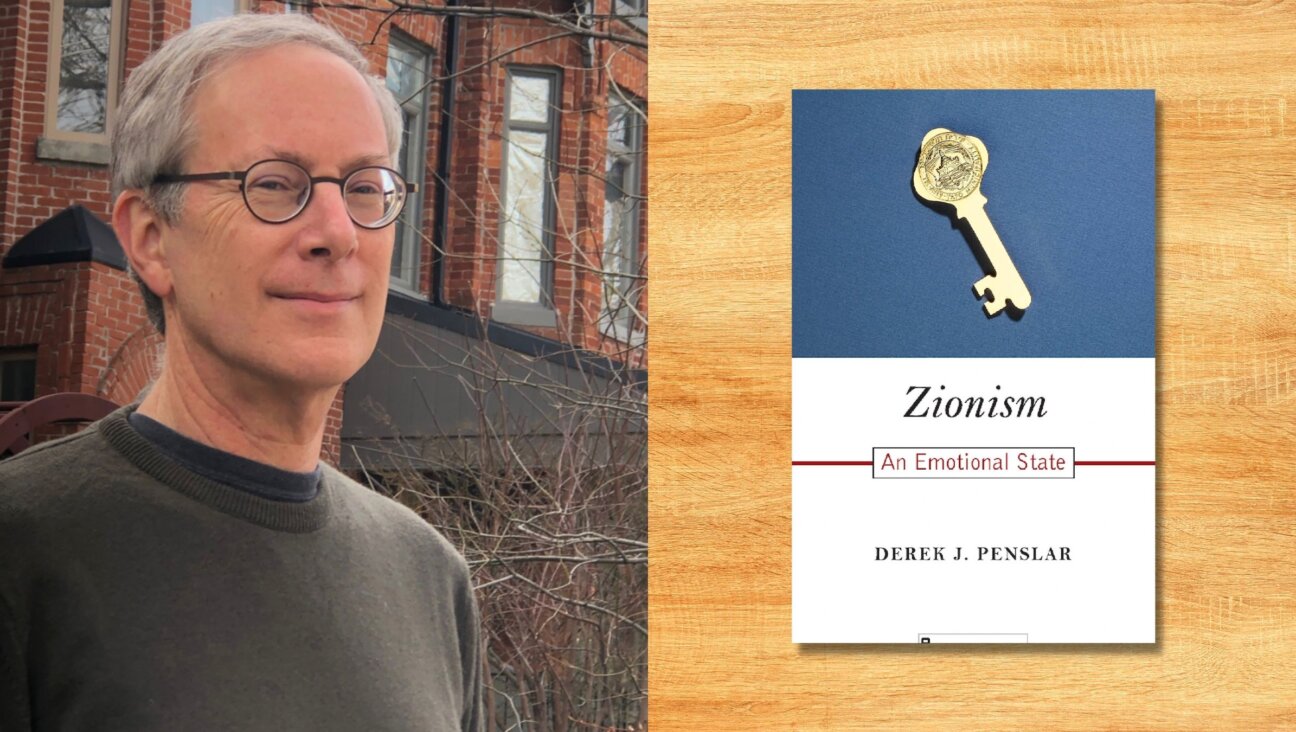I Went To New Hampshire To Buy J.D. Salinger’s House

Image by Kurt Hoffman
I have traveled to Cornish, New Hampshire, with the intention of buying J.D. Salinger’s house. Last year, when the house went on the market, it was listed for $679,000, but now Jane Darrach, the real estate agent for the property, has told me the price has dropped to “585-ish.” It seems like a lot of money to spend on a house unless, of course, you happen to live in Manhattan or Williamsburg where 585-ish will buy you a 400 square foot studio. In Cornish, 585-ish will apparently net you 2,300 square feet on a large plot of land, plus a huge chunk of literary history. The fact sheet for the house promises a “charming house set in an enchanting garden of flowers and trees.” It adds, “Land on both sides of the road ensures privacy.” Well, since we’re talking about J.D. Salinger, that’s a given.
At first, it seems surprising that Salinger’s house has been on the market so long. You’d figure that some rabid fan, some like-minded artistic recluse or some literary foundation would have snapped the joint up and turned it into a historic site or a writers’ retreat. Then again, I found it pretty surprising when I went to the Paris Theater on the opening weekend for the Shane Salerno documentary “Salinger” in the fall of 2013, and there were only three other people (all dudes) in the audience. Maybe there’s less to the Salinger mystique than I thought.
At any rate, according to Darrach, that’s not what sells houses. “Houses sell because people want a home,” she says.
So here we are.
•

The tale of Salinger’s rise to fame and his escape to Cornish have become the oft-repeated stuff of oft-romanticized literary lore. He was born in Manhattan in 1919 to Sol Salinger, a Jewish cheesemonger, and the former Marie Jilich, a Catholic woman who changed her name to Miriam so she could pass as Jewish. Apparently, J.D. didn’t learn that fact about his mother until after his 1933 Bar Mitzvah, and he didn’t take the news well. An erratic student at the public and private schools he attended in New York, he wound up at Valley Forge Military Academy in Wayne, Pennsylvania, said to have been a model for Pencey Prep — Holden Caulfield’s school in “The Catcher in the Rye.”
At college, first at Ursinus College in Pennsylvania, then at Columbia University in New York, he started writing seriously. But probably his most formative experiences happened during his years in World War II where he served in the 12th infantry regiment, landed on the beach at Normandy on D-Day and, later, was present at the liberation of a sub-camp at Dachau, all the while working on a draft of what would become “Catcher in the Rye.”
Critics often mention World War II when they expound upon the alternately mournful and wistful qualities that pervade Salinger’s writing and when they discuss his eventual retreat into seclusion. “Catcher” was published in 1951, “Nine Stories” in 1953, the same year he moved to Cornish. He would remain there until he died in 2010 at the age of 91. In 1965, he published the novella, “Hapworth 16, 1924” in the New Yorker — to date, his last published story.
Depending on your perspective, the stories of Salinger’s years in Cornish could be described as distressingly creepy or improbably triumphant. He was exhibiting symptoms of depression and PTSD or he was actually living out the fantasy that Holden Caulfield described: “I’d build me a little cabin somewhere with the dough I made and live there for the rest of my life. I’d build it right near the woods, but not right in them, because I’d want it to be sunny as hell all the time.”
There’s probably a little truth and a little phoniness in all of that.
•
Cornish is a town of less than 2,000, located in Sullivan County along the Connecticut River, which flows into Blow-Me-Down Brook. I think it’s all right to laugh at the brook’s name; reports are legion of J.D. Salinger palling around with area teenagers, and I’m willing to bet that they laughed about it too. President Woodrow Wilson located his so-called “summer White House” in Cornish, and kept an office across the river in Windsor, Vermont, on the second floor of the post office, the same post office where, in 1979, photographer Michael McDermott would capture J.D. Salinger heading inside to get his mail. A big scoop, apparently.
Aside from Salinger, Cornish’s most famous full-time resident was probably August Saint-Gaudens, the French-born American sculptor who founded the Cornish Art Colony here in 1892. Much of Saint-Gaudens’ work is on display at the Saint Gaudens national historic site in Cornish, but he’s probably best known now for his public art in New York’s Central Park, Chicago’s Lincoln Park and Boston Common, where his bronze statues of General William Tecumseh Sherman, Abraham Lincoln and Robert Gould Shaw still stand. The land on which Salinger built his home was initially owned by Saint-Gaudens’s granddaughter, Carlotta Saint-Gaudens.
Cornish is lovely, and it offers stunning views of the river and Mt. Ascutney beyond it, but if you want to do something other than kayaking, reading during the few odd hours when the George H. Stowell Free Library is open or stalking J.D. Salinger’s old house, you’ll have to do it elsewhere. Which is why I have installed myself a couple miles away in Windsor, Vermont, another storied locale with an impressive literary pedigree. The Snap Dragon Inn is a bed and breakfast located in the former home of Maxwell Perkins — who edited the likes of F. Scott Fitzgerald, Ernest Hemingway and Thomas Wolfe. Perkins referred to the woods on his property as “paradise,” and, according to his biographer A. Scott Berg, he wanted to name one of his children Ascutney, after his favorite mountain (he and his wife ultimately went with a safer choice: Elisabeth, aka “Zippy”).
All this beauty and history is promising and inspiring, sure. But since I’m talking about buying a house here, there are duller, more pragmatic issues to consider. Such as:
If you moved here, what exactly would you do?
Where would your kids go to school?
How would you spend your time?
And, oh yes, where would you go shopping?
•

Image by Wikimedia Commons
“That’s a lovely area,” I am told by the proprietor of Boston Dreams, a Red Sox-themed coffee and ice cream shop on State Street in Windsor, when I ask her about Salinger’s home. “Are you folks big outdoors people?” she asks.
“Not especially.”
“Are you good at fixing places up?”
“Hmm. Not that either.”
“Do you have money to pay people who are?”
“Well…”
Walking around the towns that surround Cornish, one feels a sense of decency combined with resignation, a sense that the people you encounter didn’t do as well as they’d hoped they would the first time around, and now they’re trying to start again — but with diminished expectations. The Main Street of Windsor recalls the one described by Bruce Springsteen in “My Hometown.” “Now Main Street’s white washed windows and vacant stores. Seems like there ain’t nobody wants to come down here no more.”
There are as many empty storefronts as operational ones. Streets are quiet, “Twilight Zone” quiet, the sort of quiet that you get in an episode where someone finds a magic watch that transports them into the past but, when they get there, they wonder where all the people have gone. In a Main Street antique shop, a man speaks openly about the fact that he’ll eventually have to sell his house so that he can keep pace with his health care bills.
On the other side of Main Street, a girl sits at a card table in front of her house selling homemade Paracord bracelets for a dollar apiece; no one’s buying. Offering the news of the day, the headlines of local papers have an air of Garrison Keillor’s Lake Wobegon about them: “CCG Looks to ‘Plan B’ for Pumpkin Festival Location”; “UU Church Raises Over $1 Million”; “Tiger Terrorizes Mountain Ave.” Coupons for Price Chopper, where Salinger allegedly did some of his grocery shopping, offer 25% off on sheet cake.
In a shop that apparently specializes in cheese, maple syrup and honey, a pair of teenage girls are listening to Patti Griffin sing “Forgiveness” while they discuss how some guy has treated them.
“But how would you like him to treat you?” one asks.
“Like a human being,” the other says. “Like I actually exist.”
Everybody you encounter seems to have one of two Salinger stories — either they only glimpsed him once or they met him, but only briefly. He was sociable, but kept to himself; he was friendly but suspicious; he wanted his privacy and they honored his wishes.
“I don’t think he ever came in here,” a librarian at the Windsor Public Library tells me. “He came to the post office sometimes and people would see him, and my husband used to do some appliance work over at his house and he would enjoy the conversations he had with him immensely, but he sure didn’t like to be recognized.”
“That’s why a lot of people were moving into the area — because they liked the quietness,” Ethel Miller, who worked as a nanny for Salinger’s children, is quoted as saying in Shane Salerno and David Shields’s massive oral history/biography “Salinger.” “Most people left other people alone. They didn’t try to bring you into their lives, and they didn’t want you to try to come into their lives. You met on the street, you said hello, and you went your way.”
The Windsor Diner looks like something out of a Hemingway short story that Maxwell Perkins edited, actually one particular story — “The Killers.” The refurbished train car features homemade pie and chili, an all-you-can-eat Thursday fish fry and “Rebel Yell” and “Baba O’Riley” on the soundtrack. Old timers sit at the counter and order chili or the pasta special with root beer. Word has it that J.D. used to be among them, that he would come in alone and take a stool near the grill. If he was just a private person and not an emotionally disturbed one, I’m guessing he probably didn’t order the fried tripe. Until you get to the towns around here, you assume the stories of J.D. stopping in for roast beef suppers at American Legion halls and churches to be apocryphal. Here, on the ground, they make more sense — not a lot of dining options.
There are no reports of Salinger getting nostalgic for his Jewish past, but if he ever had a hankering to attend services, he would probably have to schlep all the way to Congregation Shir Shalom —about twenty miles away from Cornish in Woodstock, Vermont, a cute town lined with shops on Central Street, each one of which plays lonely, rainy day indie rock tunes, each one of which makes you feel bad when you don’t buy anything in them.
And yet, along with the quaint, small-town vibe around here, there’s something vaguely sinister. Drive too fast past the town line and turn onto an off road and the denizens cease resembling earnest characters in John Sayles films and start looking like perps in “True Detective.” In the car, the “Prairie Home Companion” episode that the local NPR station is playing begins to sound more comforting than irritating.
Houses seem fragile around here — Salinger’s house caught fire in 1992; Saint–Gaudens’s studio was destroyed by fire in 1904, then rebuilt, only to catch fire again forty years later. A 1938 hurricane laid waste to Max Perkins’s “paradise.”
So, the questions remain:
How would you live here?
And, also, what would your kids do all day?
•

Image by Getty Images
Even from nearby Windsor, getting to J.D. Salinger’s house takes longer than you might expect. Google Maps gets it wrong by about a mile. People in Cornish and Windsor like to talk about how they would give bad directions to any gawkers seeking Salinger’s house, and you wonder if, even five years after Salinger’s passing, Google is in on the joke. The closer you get to Salinger’s house, the worse the road gets. There are no signs pointing the way, no commemorative plaque labeling this as a historic site. The only indication that you’ve got the right place is the sign from the Martha E. Diebold Real Estate Company stuck in the ground — “Exclusive.”
“We’re pretty low key around here,” more than one person has told me.
The real estate agent is running late. Though it’s June, it’s seriously cold outside and it’s raining like hell, so I park in the driveway and wait. While I’m in the car, a bearded man wearing a hooded khaki jacket and a brass National Park Service nameplate approaches. He says he’s a tenant of the current owner and he’s living in the two-car garage that has been converted into an apartment. “I’d let you in out of the rain, but I think that’d go against protocol,” he says.
I feel like a stalker. I feel like one of those psychopaths who used “Catcher in the Rye” to justify their crimes. I feel like Mark David Chapman.
Through the windshield, I assess the place — a chocolate-brown, gambrel-roofed, wood-framed house. It looks cozy, but there’s a morbid aspect to the residence too — somewhat akin to the feeling you might get standing outside Kurt Cobain’s house in Seattle or David Foster Wallace’s childhood home in Champaign, Illinois (how much would that go for?). Through the rain, I’m looking at the house where Salinger didn’t write “Catcher.” Here is the house where he may or may not have been working on the as-yet-unpublished works breathlessly described in Shane Salerno’s documentary. Here is where he brought home students from Windsor High to groove to records on his hi-fi. Here is where he raised his children Matt and Margaret. Here is where he allegedly penned fan letters to actresses Elaine Joyce and Catherine Oxenberg. Here is where he watched crap television shows, such as “Let’s Make a Deal.” Here is where, if you believe the more sensational stories, he experimented with Scientology, spent hours sitting in an orgone box and drank his own urine. Here is where he embraced Zen Buddhism. Here is where he left behind his identity as a New York Jewish writer and army vet to become whatever you make of the inkblot of his Cornish existence —Ascetic. Mystic. Family man. Crackpot. Hermit.
“I grew up in a world nearly devoid of living people,” Salinger’s daughter Margaret wrote in her 2000 memoir “Dream Catcher.” Well, yes.
When the rain lets up, I get out of the car. The clouds are low and the greenery is lush. The lilies of the valley are still in bloom. Behind the house, a hammock is strung between two tall trees. If the weather were clear and you got into the hammock — something I really want to do but don’t— you would look down into a steep gulley and then to Mt. Ascutney. Today, that view is obscured by fog which rolls down hills like the clouds of Sils Maria.
“It’s a small house,” Jane Darrach says upon her arrival. “But I think that speaks in its favor.” She speaks with an English accent and says that the view today reminds her of Wales.
The entrance to the house is around the side. We walk into the front room, where the kitchen is also located. It’s wonderfully tidy in here, also quite cluttered. The current owner is on the scene. She bought the house from Salinger who moved to another house nearby — there’s a back story to Salinger’s move that involves one of his wives, but I’m not quite clear on what it is and anyway, it doesn’t seem important. The owner tells me that, despite the reports of Salinger’s reclusiveness and misanthropy, as soon as she moved in, he came over, shook her hand and told her to call if she ever needed him for any reason. He even gave her his phone number.
The house is filled with nice little touches — deep red kitchen counters that Salinger picked out himself; pull-down cupboards behind the washing machine that were designed to Salinger’s specifications; there are three fireplaces in total; windows in every room, many of which look out onto the mountains. It feels a little like visiting a grandfather’s house, which makes sense since J.D. Salinger was old enough to be my grandfather. In 1951, Holden Caulfield was already 17. Even the idea of this place seems kind of old-fashioned, an antiquated concept of escape and anonymity — these days, canceling a Facebook account or refusing to have an email address seems like every bit as radical an idea as packing it all and moving to a home in the middle of the Cornish woods.
But at the same time, something is odd about this place. Everything seems slightly smaller than it should be, as if the house were built as a 75% scale model, a set Wes Anderson designed so his actors would look larger and more confined by it. I’m about 5’8” and Salinger was 6’2” and, at certain times — entering one room or another, making my way up or down a set of stairs — I feel as if I need to duck. Looking out through one of the windows onto the road outside has the aspect of peering through a porthole. No cars pass by.
“Well,” I tell Darrach, “If he listened outside and heard a car coming and thought someone was coming for him, he’d probably be right.”
“Yes,” she says. “He was quite paranoid.”
In some sense, every dwelling can be seen as the outward expression of its owners’ inner pathologies. But usually that expression reflects the synthesis of multiple people’s needs and personalities. This house feels very much the product of one particular man’s very particular quirks. The reported square footage is almost exactly the same as that of the house I grew up in on the northwest side of Chicago, yet Salinger’s place feels smaller. There is precious little open space. Rooms feel cut up. A stairway leads down to a basement passageway that ends up in the garage. According to Darrach, wherever Salinger lived, he always made sure there was a secret way out. I don’t know if the author was ever diagnosed as agoraphobic, but the house suggests that he was.
“We lived five miles away from the nearest neighbor,” Margaret Salinger told Philadelphia Inquirer book critic Carlin Romano in 2000. “We had no guests. I’d stayed with no other family. I didn’t even know that I was afraid 24 hours a day until I was 15.”
Even Maxwell Perkins eventually tired of his paradise after a while — “I do not see how the English go on living for generation upon generation, forever in the same place, where so much tragedy must have accumulated,” he is quoted as saying in A. Scott Berg’s “Max Perkins: Editor of Genius.”
I think about what I would need to do in order to make this house feel more livable, less claustrophobic — knock down some of these walls, for one thing, open it up, get more natural light in here. Actually, maybe you could just start from scratch — level the place, create something brighter, airier. But then, what would be the point of buying Salinger’s house?
I ask Darrach about the schools.
The kids could go to Cornish Elementary or Kimball Union Academy, she says, each of which is about a 20-minute drive away. Or they could go to Hanover — about a 25-minute drive. She brought up her kids in the area and the schools are great.
“Are they raising their kids in the area too?” I ask.
No, she says, Brooklyn.
I ask her about shopping, if, say, you don’t feel like just driving to the Price Chopper in Windsor? She suggests the Hanover Co-op — 17 miles away, yes, but stocked well enough, she says, so that you only would have to go there once every two weeks.
I ask about remodeling the place.
She tells me she can send me a list of architects.
“It’s a big commitment,” she says.
I take a breath. Yes, it is.
•
There’s a point in a reader’s life when you read “Catcher in the Rye” and you stop thinking that you’re Holden Caulfield or hoping that you’re not, and you start thinking that you’re Holden’s father and you’re just hoping he’ll make it through okay. There’s a point in a parent’s life when you stop looking in the mirror and thinking you see Holden Caulfield and instead, you start looking at your kids and hoping that, if they ever start feeling like him, you’ll be able to help them work through it. You find yourself empathizing with Holden — even though you don’t identify with him anymore, if you ever really did.
There’s a time too when you go to a seemingly idyllic place, say, Cornish, and you look at a house and, even though you wouldn’t want to live there the way it is, you think it should stay that way. You think that someone else should buy it and keep everything intact. As it turns out, you don’t want to live there for a whole host of reasons, but one of the big reasons is because you don’t want to change the house. You want J.D. Salinger’s house to remain J.D. Salinger’s house— you think it should stay there forever as a tribute. Or maybe as a warning.
Adam Langer is the Forward’s culture editor. His novels include “The Salinger Contract.”
A message from our Publisher & CEO Rachel Fishman Feddersen

I hope you appreciated this article. Before you go, I’d like to ask you to please support the Forward’s award-winning, nonprofit journalism so that we can be prepared for whatever news 2025 brings.
At a time when other newsrooms are closing or cutting back, the Forward has removed its paywall and invested additional resources to report on the ground from Israel and around the U.S. on the impact of the war, rising antisemitism and polarized discourse.
Readers like you make it all possible. Support our work by becoming a Forward Member and connect with our journalism and your community.
— Rachel Fishman Feddersen, Publisher and CEO






























